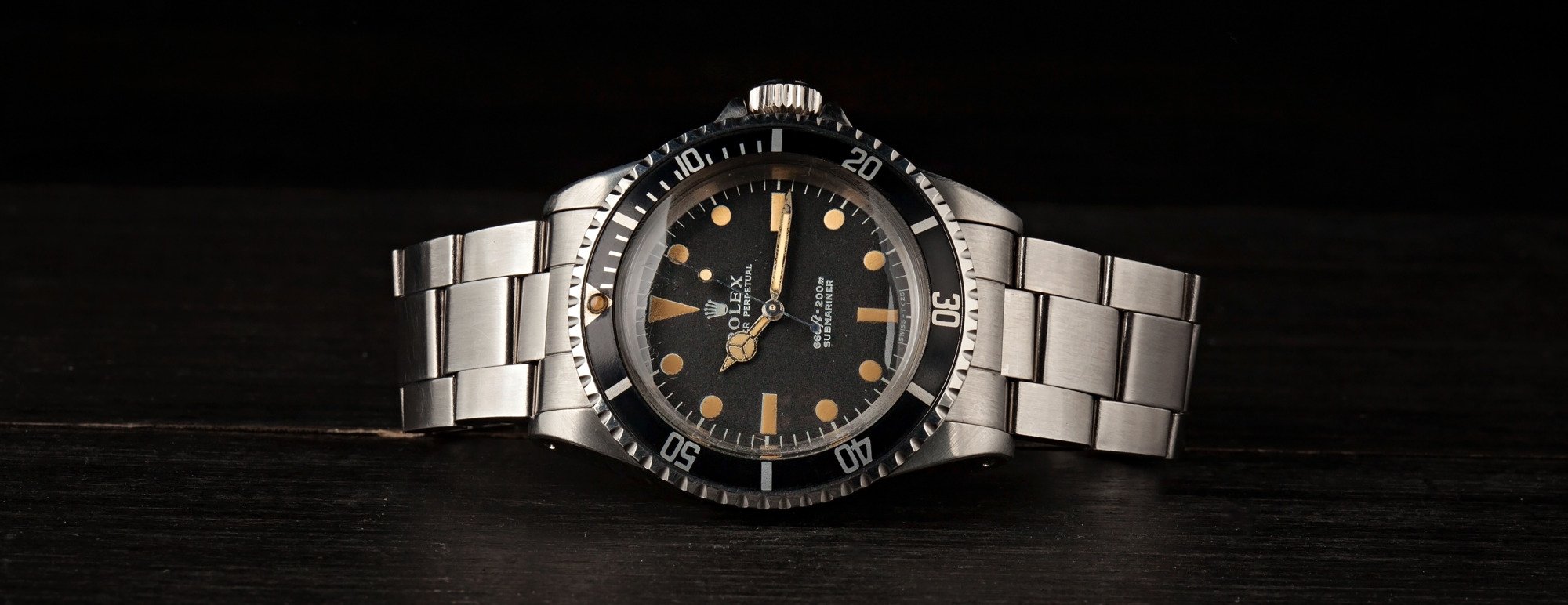The face of a watch, or its dial, is arguably the centerpiece that captures the essence and personality of the timepiece. It’s what first draws the eye and connects on a personal level with the wearer. In the world of luxury timepieces, Rolex watches stand out not just for their unparalleled precision but also for their distinctive dials. These dials are sought after by enthusiasts and collectors alike, looking to find a piece that truly stands out. Given their rarity and the craftsmanship involved, such unique dials command a higher price and are less commonly found in the general market.
If you’re in pursuit of a timepiece that goes beyond the ordinary, consider exploring the exclusive range of Rolex watches. These masterpieces are a testament to Rolex’s commitment to excellence and innovation in watchmaking. Below, we delve into some of the finest examples of Rolex’s craftsmanship, showcasing dials that are nothing short of extraordinary. Let’s explore these remarkable pieces together:
Mother of Pearl
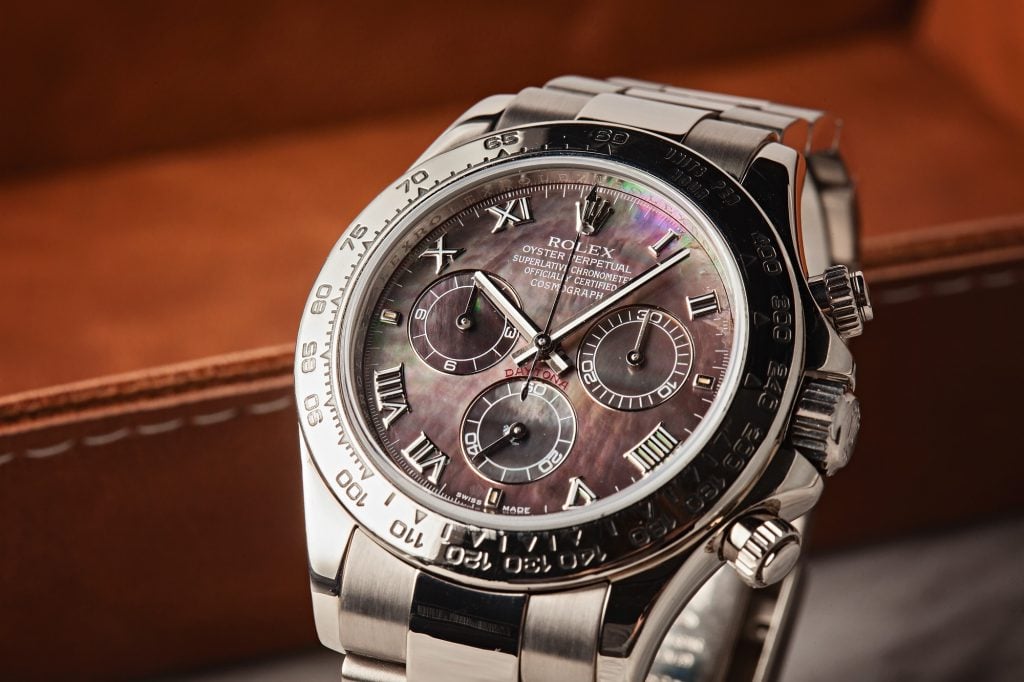
Models like the Datejust 41 use a combination of Mother of Pearl diamond set dials with Oystersteel and white gold finish to effect. These exude an elegance you can appreciate once the watch reflects light. The mother-of-pearl version of the Datejust is one of Rolex’s most recognizable pieces. It has a price to match, carrying signature Rolex engineering with a unique finish that you won’t find with any other watch.
This model comes with the signature fluted bezel seen in many Rolex watches. It helps secure the case, ensuring it’s waterproof while also serving as a visually pleasing element. It also uses the Rolesor, a combination of two metals that enhance the watch’s strength.
Ice Blue Dials
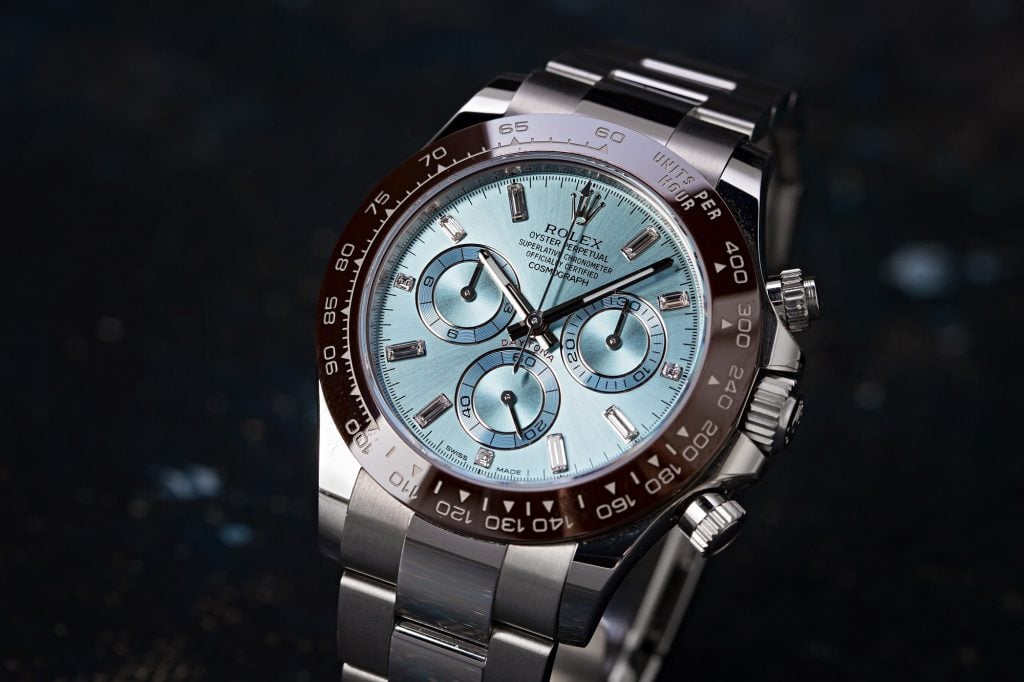
The beautiful Rolex Daytona 116506 stands out because of its ice-blue dial. It is a timeless piece honoring the original Daytona meant for high-octane racing. Ice blue is discreet yet demands your attention. It exudes nobility, and Rolex uses platinum to add durability and finery to the finish, making it a feature that many watch enthusiasts desire.
The Cosmograph Daytona comes with a high-performance Tachymetric scale to measure speeds. The platinum finish also helps add vibrancy, and is one of the rarest metals on earth. It also matches well with Rolex’s signature oyster bracelet.
Meteorite Dials
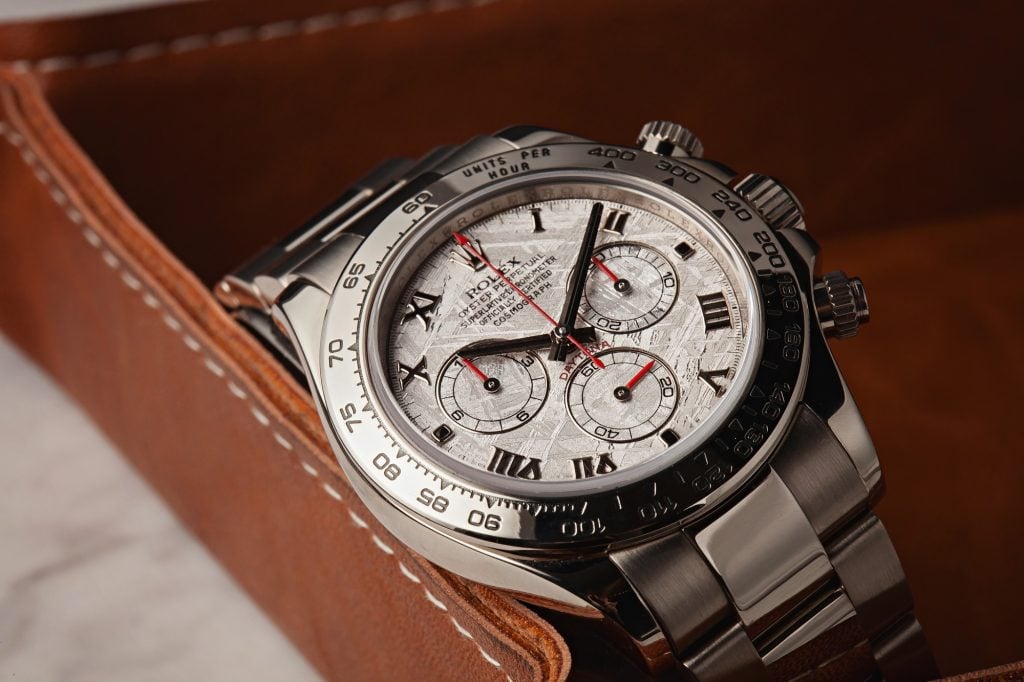
There is nothing like a Rolex Meteorite Dial that speaks volumes about uniqueness. The dial comes from the heart of an asteroid which is a piece of space. It is a piece of another heavenly body with a composition you cannot find elsewhere on earth. One piece that attracts many is the GMT Master-II because of its meteorite dial.
Apart from its rugged yet beautiful meteorite dial comes the two-color Cerachrom bezel. The red and blue match its otherworldly feel. It also uses high-quality 18 kt white gold alloys to create the desired finish. With the dichotomy comes the ability to tell two time zones, noted with the GMT series.
Onyx
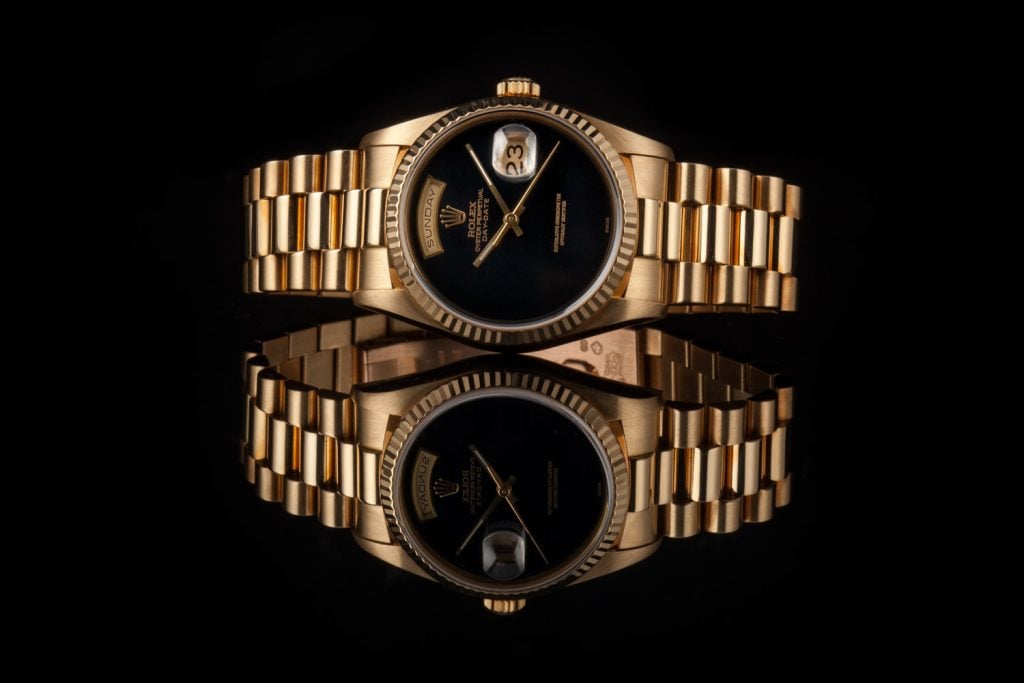
One of the classics returns with a new finish in Rolex’s latest Onyx dial creation, the Day-Date. The onyx finish makes the watch stand out alongside its 18 kt yellow-gold body. Combined with a diamond-set dial and a President bracelet, it appeals to those who love classic designs. The first Day-Date was created in 1956, revolutionizing watches that featured the date with the time.
As usual, Rolex designs watches with longevity in mind. The hour markers of the onyx dial are made from gold to help prevent tarnishing. The president bracelet matches the original 1956 Day Date, now implemented with modern technology.
Sodalite
The Rolex Datejust Sodalite is one of the rarest entries in this list, with its release dating back to the early 2000s. Sodalite is a beautiful opaque royal blue gemstone that was rare until the discovery of a mine in Canada in 1891. The dial looks like how you would see the texture and color of sodalite up close. This creates a unique finish and one that’s hard to find, given that Rolex no longer produces new models with this ornamental stone.
The Datejust sodalite was one of the series released for women, having a fluted white gold bezel and stainless steel jubilee bracelet. Crystal sapphires adorn the watch itself.
Coral
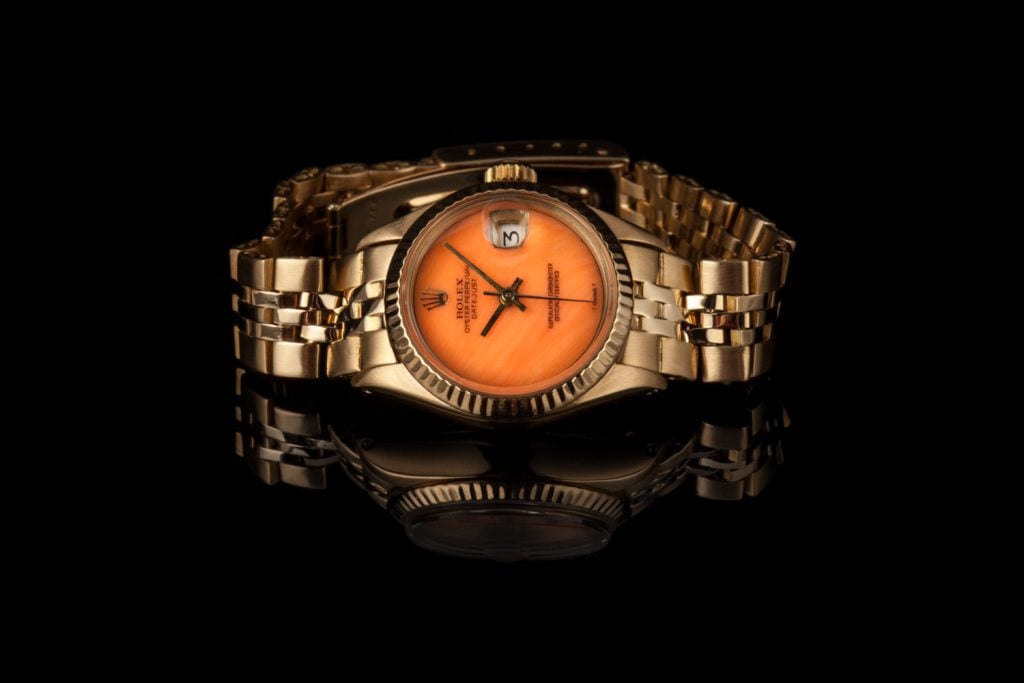
In 2021, Rolex released the Coral red dial as a part of their Oyster Perpetual series of watches. You can no longer find this rare limited edition which has shot up its demand and price shortly after its release. One thing that makes it stand out is the red color which can attract the attention of onlookers. The vibrant red comes with a screw-down crown and a stainless steel case.
With that in mind, Rolex used to actually make watches with dials made from actual pieces of coral, in much the same way that other types of stones or minerals would be used. Just like the modern Oyster Perpetual watches from Rolex, the goal of the coral dials was to make the vivid colors stand out, and brightly colored pieces of coral were chosen for them. In addition to the fact that Rolex didn’t produce all that many coral dials, the number of surviving examples is significantly fewer, due to the fact that many have been damaged over the years.
Tiger Eye
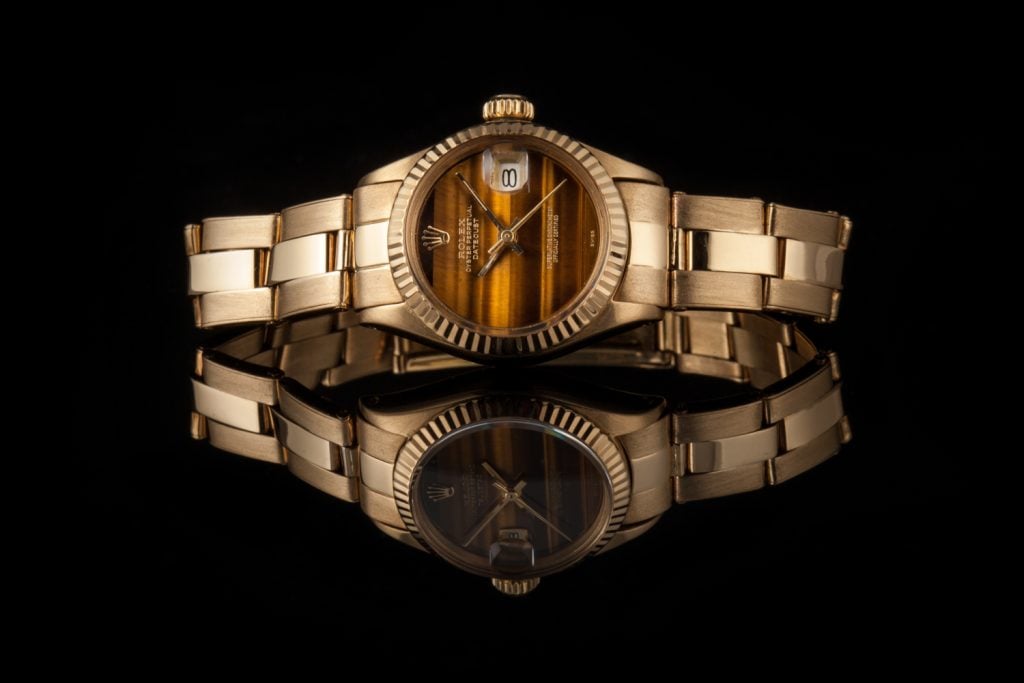
The Datejust Tiger’s Eye dial is one of the rarest Rolex watches. It was released in 1980 in limited numbers so it wouldn’t compete with the Day-Date watches. Solid gold Datejusts are already rare, and the Tiger’s Eye dial’s supply lessens yearly. It features a unique finish, with an orange and brown coloration that stands out while you’re wearing it.
This classic watch features a fluted bezel and a President bracelet. You’ll even get a serialized hangtag to solidify its rarity. It’s definitely for the enthusiast or the collector looking for Rolex watches that are no longer in production. It’s a simple yet eye-catching piece that many would enjoy having.
Lapis Lazuli
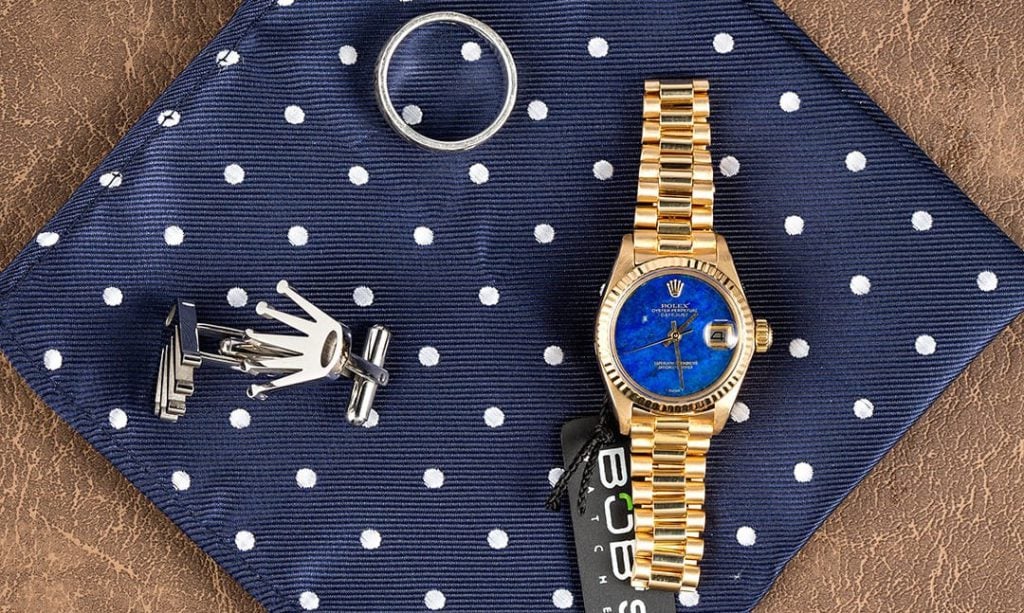
The Datejust Lapis Lazuli dial is another rare watch from Rolex, first released in the mid-1990s. Hardstone dials like these are hard to find because they come in limited numbers. It is also a testament to the difficulty of creating a high-quality piece. They have to cut a fine thin slice of hard rock. You’ll have to go through a lot to find one that can fit the prestige that Rolex demands.
The white gold case matches perfectly with the Lapis Lazuli dial. You’ll even find some versions of the watch with traces of gold, as they can naturally form within these rocks.
Wood
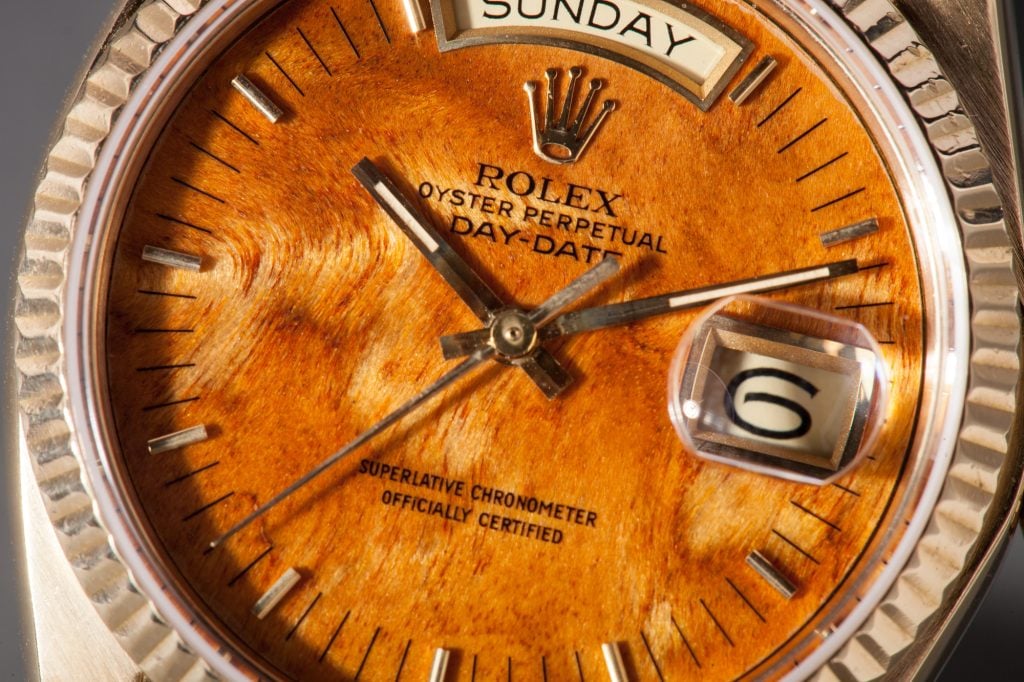
The first wood-dial Rolex watches first appeared during the 1970s and have been a sporadic addition to their collections. They’re very few and far between because high-quality wood that can resist wear over time can be hard to find. There are only four types of wood that Rolex uses, and you see them in these limited Day-Date releases. These are:
- Birch
- African Mahogany
- Walnut
- Madrona
The wood finish is something that can be appealing to any desiring Rolex watches. It gives off a unique vibe. Mahogany is the rarer dial to find because Rolex eventually stopped producing these dials.
Malachite
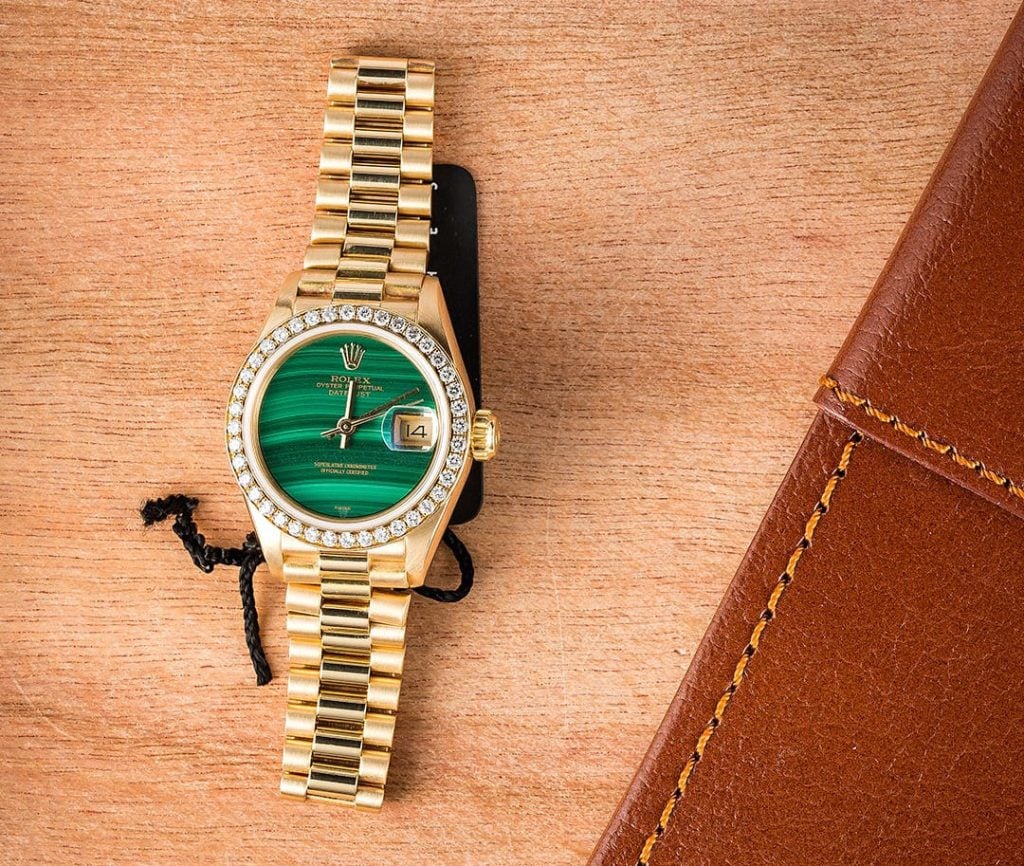
Malachite is one of the rarest stones you can find naturally, and it’s even harder to find large chunks of them enough to produce fine watches. The Day-Date Malachite dial is one of the exotic watches from Rolex. It and its Datejust Malachite dial sibling were released decades ago when the company decided to create different exotic dials such as Meteorite and Onyx.
This version stands out because of its green color and the striations you can see on the dial. As with the rare dial, you can also find it paired with a hidden clasp President bracelet, which is uncommon among Rolex watches.
Marble
Marble dials were once popular finishes among Rolex because of their clean white or black finish. Black marble dials are rarer and as such, demand higher prices. You’ll often see the natural stone as you look closer, even with all the polish. It’s also common to pair them with white gold cases and bracelets.
You’ll often see Marble finishes among Rolex auctions. The white marble is also a popular choice because you can see the natural formations of the rock clearly on the dial. You’ll find that they were a popular choice during the 1990s but are harder to find now. The creation of the President and Jubilee straps was because of the marble dial.
Bloodstone
Another sought-after stone dial from Rolex’s past is the Bloodstone one. You’ll see that this has the green coloration from Jasper while having red blood-like marks, hence the name Bloodstone. Most of the watches with Bloodstone dials were in yellow gold bracelets, and it’s rarer to find them in white gold. You’ll find it has the signature fluted bezel.
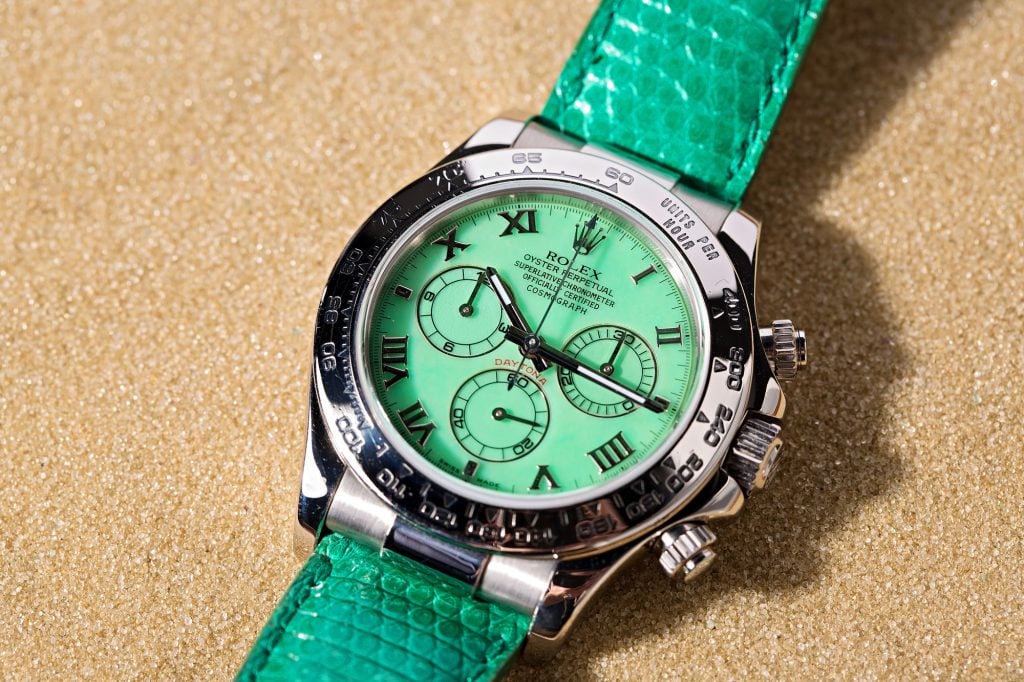
There Is a Rolex Out There for You
Those looking for unique and rare Rolex watches will have something that resonates with them in the market. Some may be harder to find than others, but they are worth their price. In good condition, these unique dials will only increase in price over time according to their demand. Check out these watches to see if any fit you.



